The year in California: Fighting on multiple fronts

The Los Angeles Times covered news all around the world. This video highlights some of our staff’s most engaging visuals and storytelling from 2017.
Garcetti is reelected. What’s next for him?

Los Angeles Mayor Eric Garcetti won a landslide reelection this spring, riding a wave of prosperity and civic rebirth that is marked by a growing skyline, blossoming neighborhoods — and wrenching gentrification. But where Garcetti goes next is a question. He says he simply wants to serve L.A. but has not completely knocked down presidential aspirations. In the meantime, he got locked out of the two most logical stepping stones: California governor and U.S. senator.
The state drought is over — for now
California’s five-year drought ended with a bang. The wettest year on record caused flooding, and Sierra snow kept ski resorts in business through the summer. But many of the problems that the drought highlighted remain, prompting debate about the massive delta tunnel plan, groundwater problems in the Central Valley and whether the state can live within its ecological means.
Former sheriff is convicted in a retrial
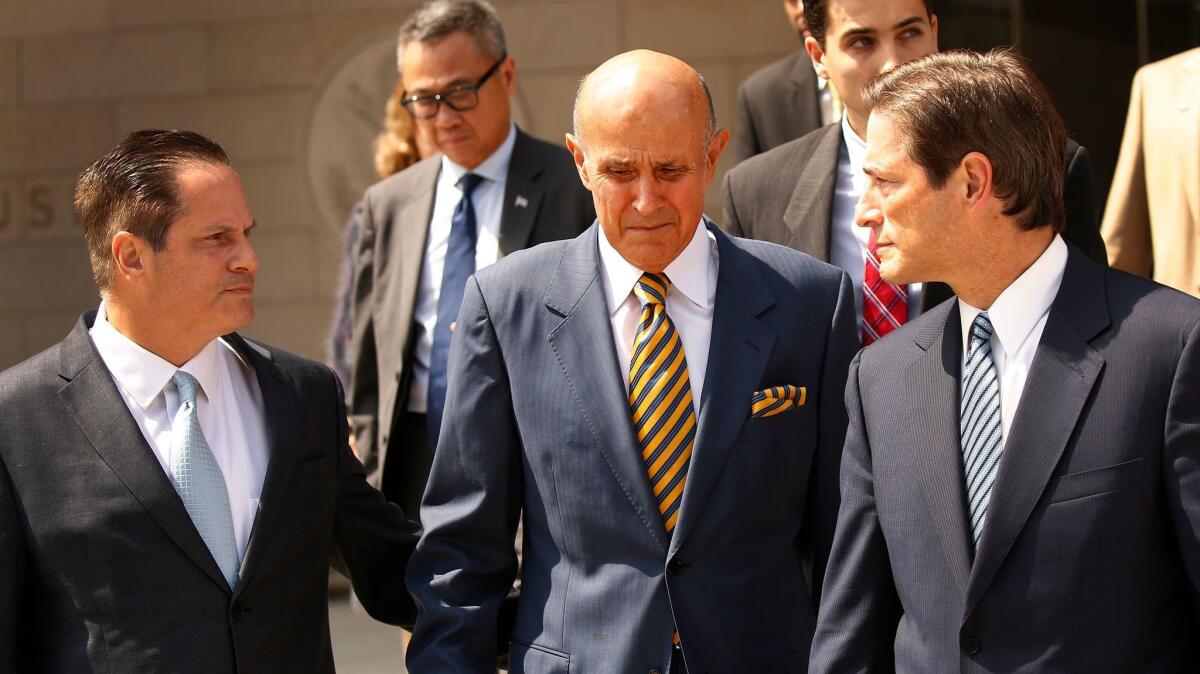
While overseeing the troubled L.A. County Sheriff’s Department, Lee Baca remained so popular that L.A. Weekly started calling him “the Teflon sheriff.” That was before the feds started investigating allegations of abuse in the jail system. In March, in a retrial, the former sheriff was convicted of obstruction of justice, conspiracy and making false statements to federal investigators.
Dam disaster averted, but a massive repair job is on the agenda
The Oroville Dam is America’s tallest. And for a few hours this spring, it came close to sending a deadly wave of water down into the Sacramento Valley. The main spillway was damaged and its emergency spillway showed signs of collapsing. Although the structure withstood this particular test, it raised major questions about how Oroville was built and maintained. In the meantime, the state is rushing to complete repairs before the rains come.
Charter school backers victorious, but future is unclear
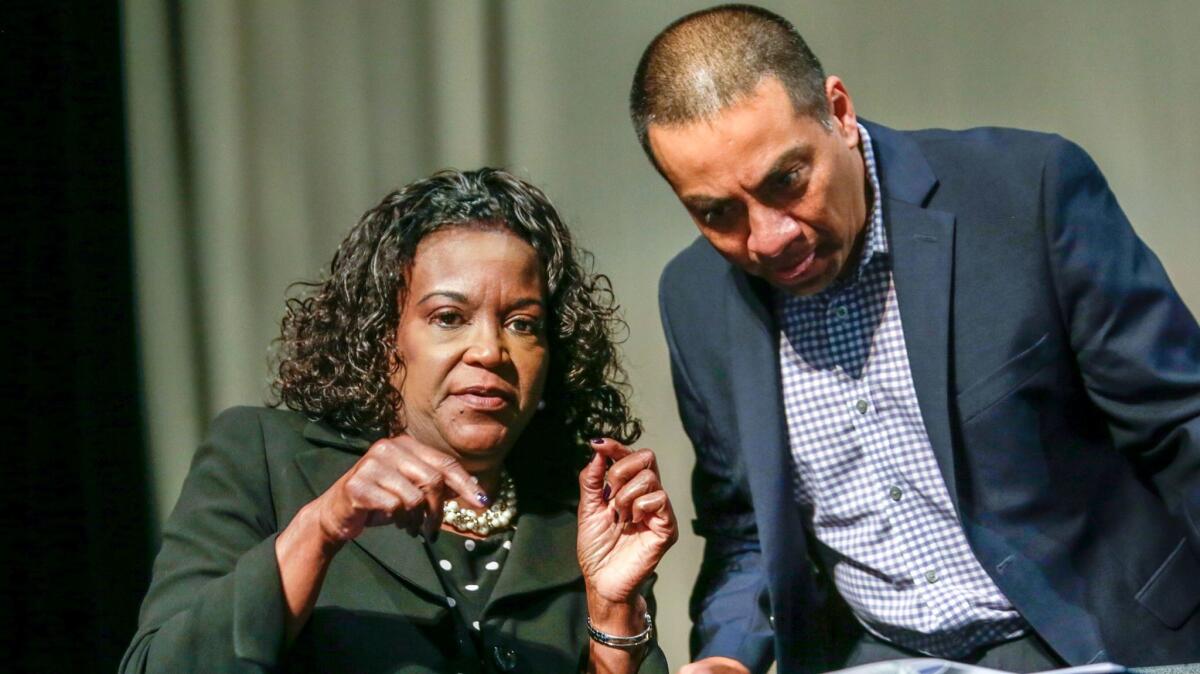
In May, charter school backers won a majority of seats on the Los Angeles Unified School District board in what was the most expensive school election in U.S. history. L.A. already has more charter schools than any other city, but advocates want to dramatically increase those numbers. What happens next is unclear. Ref Rodriguez, a charter backer and LAUSD board member, is facing three felony charges on allegations of campaign money laundering. He stepped down as board president. Meanwhile, Supt. Michelle King is on an extended medical leave.
Constituents turn up the heat at town halls
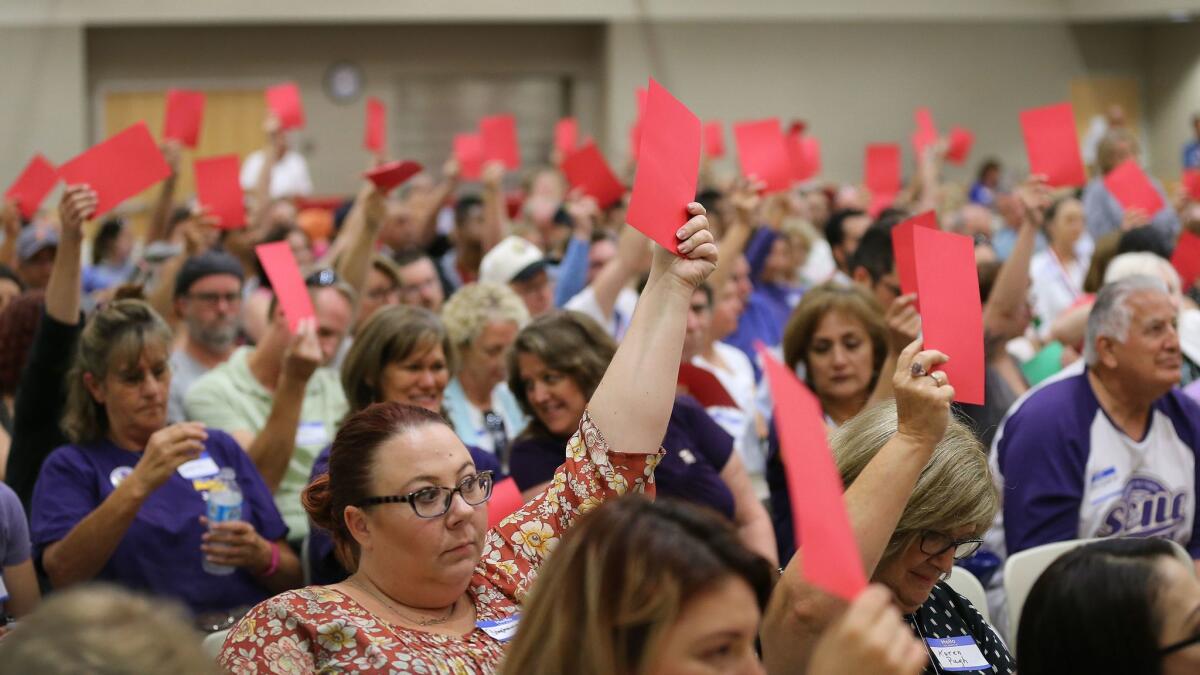
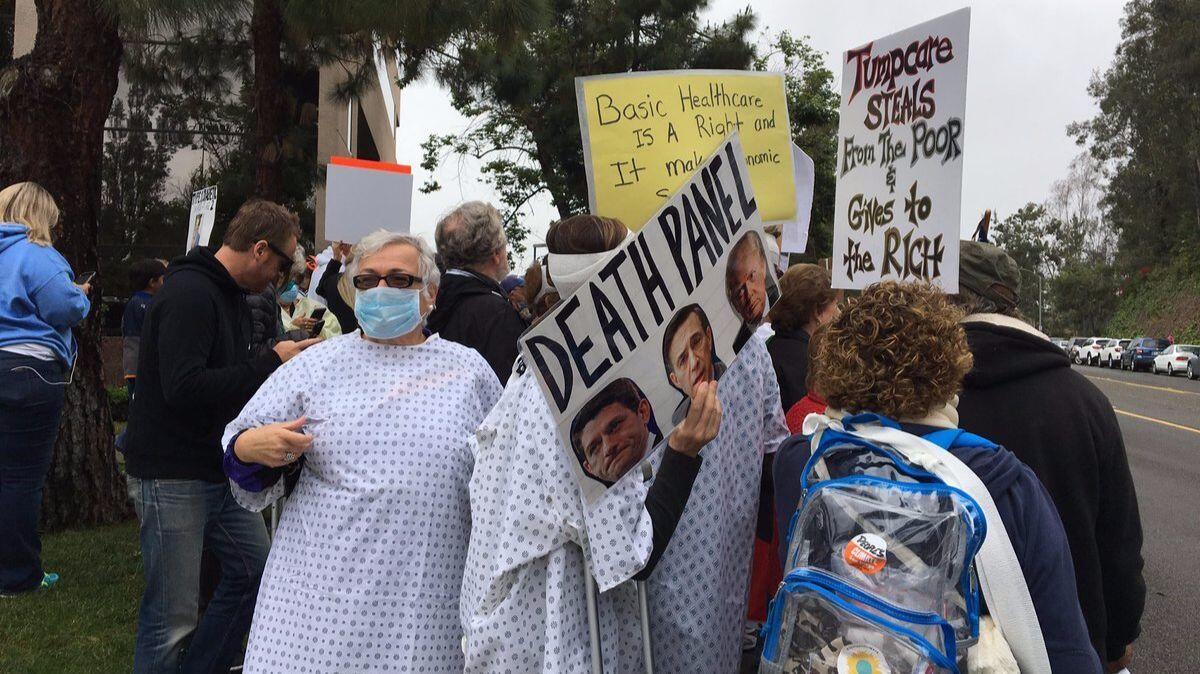
Shortly after President Trump’s inauguration, many voters turned to local town hall meetings to express their frustration — particularly with Republican members of Congress. The events often were marked by protests, rowdy crowds and a touch of political theater. Facing criticism over votes on the Obamacare repeal and tax reform, some GOP members avoided in-person town halls while others publicized their appearances. Activists rallied at so-called “empty chair” town halls without congressional members present, in some cases inviting Democratic representatives from neighboring districts to sit in.
But Republicans weren’t the only ones to face contentious town hall meetings. Sen. Dianne Feinstein fielded tough questions at events in Los Angeles and San Francisco, and several people were arrested after protesters interrupted an immigration-focused town hall held by Rep. Lou Correa (D-Santa Ana).
California works to protect people in the U.S. illegally

President Trump’s harsh words and promises of a crackdown on those in the U.S. illegally have sparked fears in L.A.’s large immigrant communities, and political leaders and others across California have voted to offer protection. In Sacramento, Democrats introduced bills specifically to counter the president’s agenda. The centerpiece of the legislation was a sweeping expansion of efforts to limit state and local law enforcement cooperation with federal immigration agents. Gov. Jerry Brown signed the so-called sanctuary state measure into law on Oct. 5.
California’s key climate change tool gets a big boost
California lawmakers approved an extension of the state’s cap-and-trade program in the summer, making it a more permanent fixture of the state’s climate change agenda. Designed as a financial incentive for companies to release fewer greenhouse gases, cap and trade was set to expire in 2020. The new law, which extends the program until at least 2030, found political acceptance when longtime critics in the manufacturing sector came on board after Gov. Jerry Brown made concessions. Brown also spent time in 2017 crisscrossing the globe discussing the environment. From United Nations-related events in New York to China, Europe and beyond, the governor worked to make the case that not all U.S. leaders were walking away from the issue.
California Democratic Party faces a civil war
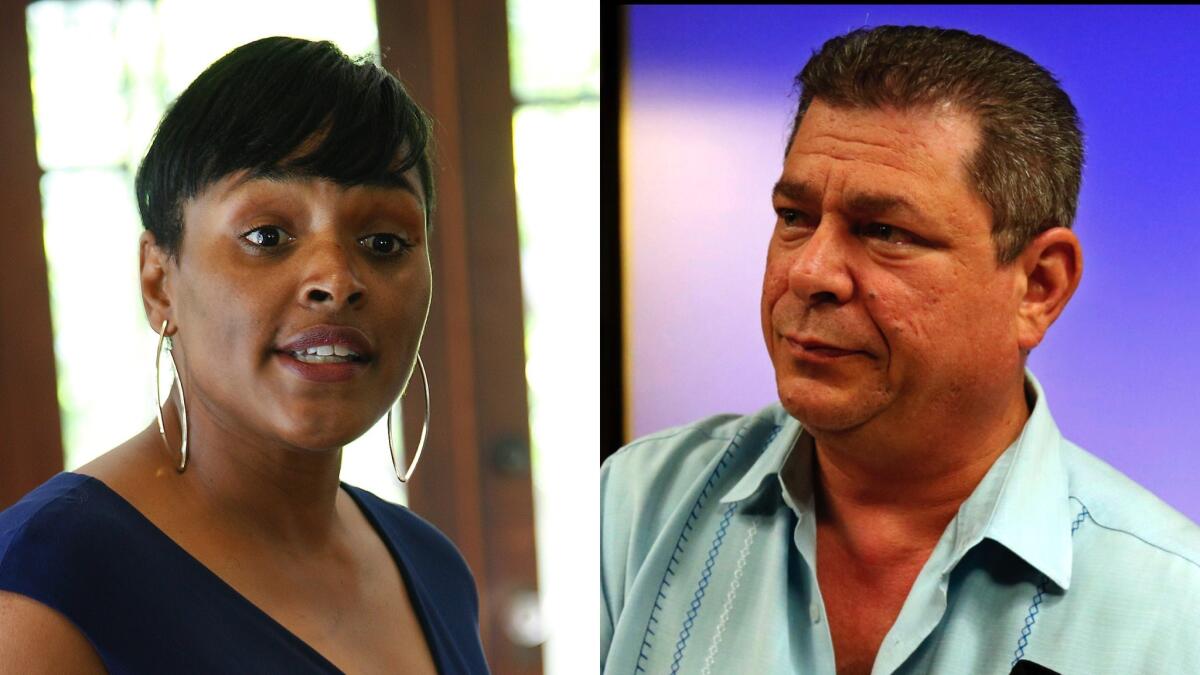
A blistering leadership fight in the California Democratic Party unearthed divisions, mirroring a similar struggle at the national level, and threatening to undercut California’s role as the nation’s political counterweight to President Trump. In May, delegates elected Eric Bauman, a bullish union organizer and party insider, as the new party chairman. He won a narrow victory over Kimberly Ellis, a progressive Bay Area Democrat who tapped into a wellspring of disaffected backers of 2016 presidential hopeful Sen. Bernie Sanders. Ellis accused party “establishment hacks” of skewing the election in Bauman’s favor by ballot stuffing and other underhanded tactics, but her challenge was rejected by the party in August after a months-long appeals process.
Two Mexico quakes serve as a warning for California

Two destructive earthquakes in Mexico offered a grim reminder of California's vulnerabilities. But unlike Mexico, California does not have an early warning system that gives residents precious seconds to prepare for the shaking. The Golden State was set to launch its own warning system next year, but the Trump administration has proposed a decrease in funding, cuts that are opposed by congressional representatives of both parties.
San Diego's hepatitis outbreak spreads to other cities
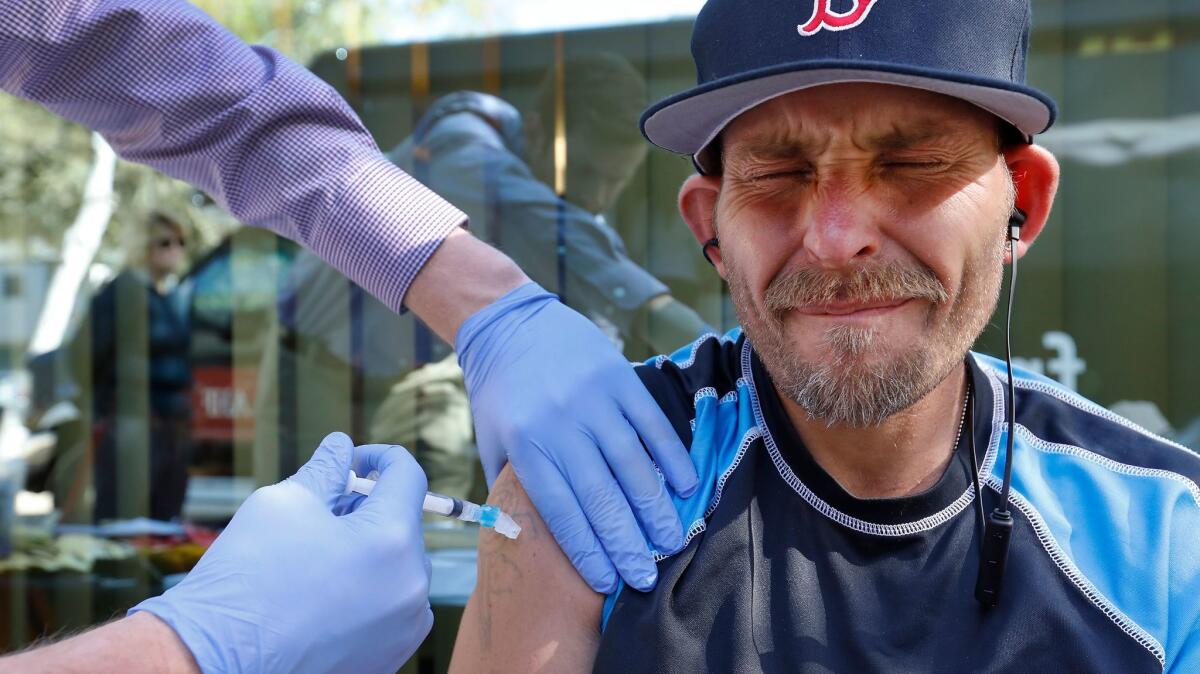
America’s worst hepatitis outbreak in years hit San Diego in the late summer and later spread to other California cities, spreading through the most vulnerable population — the homeless. Experts said filthy street conditions contributed to the outbreak, prompting San Diego to launch a massive public health campaign that included the addition of portable restrooms and steam cleaning sidewalks.
The L.A. County rail boom continues

Los Angeles County’s rail boom shifted into overdrive — with construction on the long-promised Wilshire Boulevard subway, as well as a light rail line along Crenshaw Boulevard that will eventually connect to Los Angeles International Airport. Metro’s Expo Line to Santa Monica has proven to be a huge hit with riders, though the numbers for the transit system overall are still sobering. All that construction downtown? That’s for yet another new, connecting, subway system snaking its way through the city center.
Free speech on campus
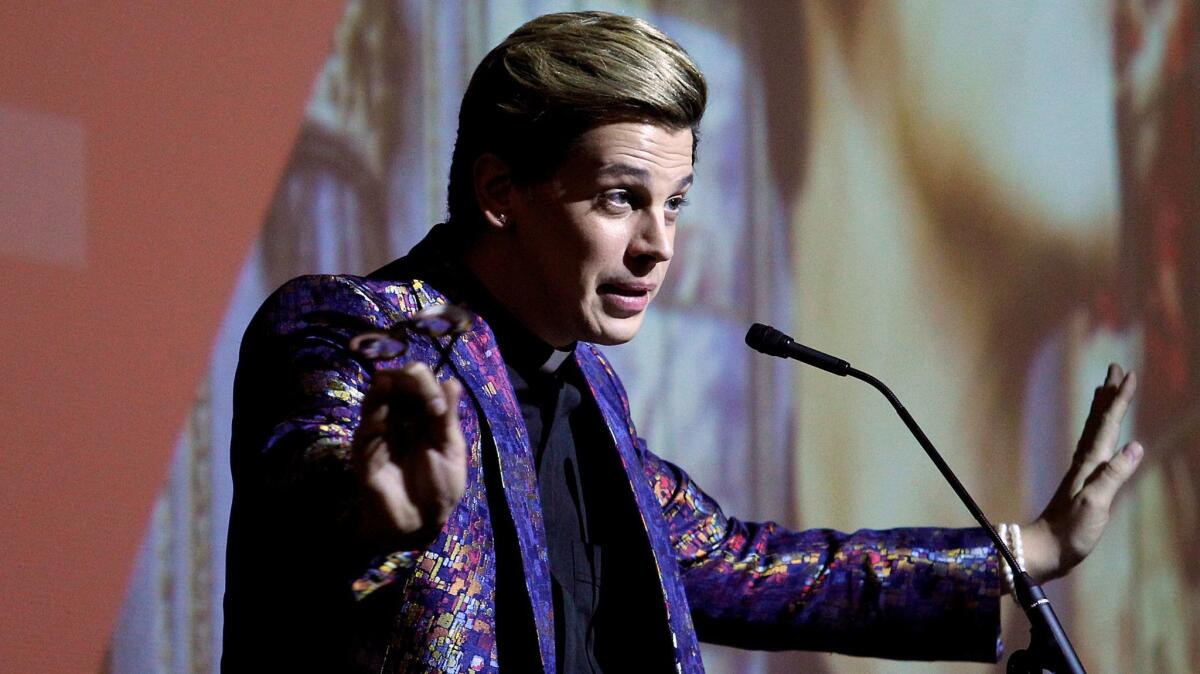
The University of California, where the free speech movement started and students now argue over how far unrestricted expression should go, announced plans in October to launch a national center to study 1st Amendment issues and step up education about them. Many of this year's student protests took place at UC Berkeley, but in November, eight people protesting an appearance by conservative firebrand Milo Yiannopoulos were detained at Cal State Fullerton.
Big Sur access problematic as Highway 1 awaits repairs
Travelers still hoping to drive on the scenic but sidelined Highway 1 in Big Sur will have to wait. Fixing the biggest debris slide in the state’s history, which closed the road to all traffic for almost four months, will take at least until late summer 2018 and cost $40 million, Caltrans said.
Wildfires in Northern and Southern California
The last three months of the year were plagued by destructive wildfires that left several communities in the state reeling. In October, infernos killed more than 40 people and destroyed more than 8,000 buildings in California's wine country. Losses from insured properties alone are expected to far exceed $1 billion, and the total bill for the fires will be still higher. Fighting the fires alone cost $189 million, according to the California Department of Forestry and Fire Protection. In December, wildfires made headlines in Southern California, as homes and countless acres were lost to the Skirball, Lilac, Rye and Thomas fires. Heavy winds, dry conditions and thick brush combined to make the Thomas fire, which scorched parts of Ventura and Santa Barbara counties, the second-largest in modern California history; as of mid-December, it had destroyed more than 600 homes and cost more than $74 million to battle.
Northern California shootings
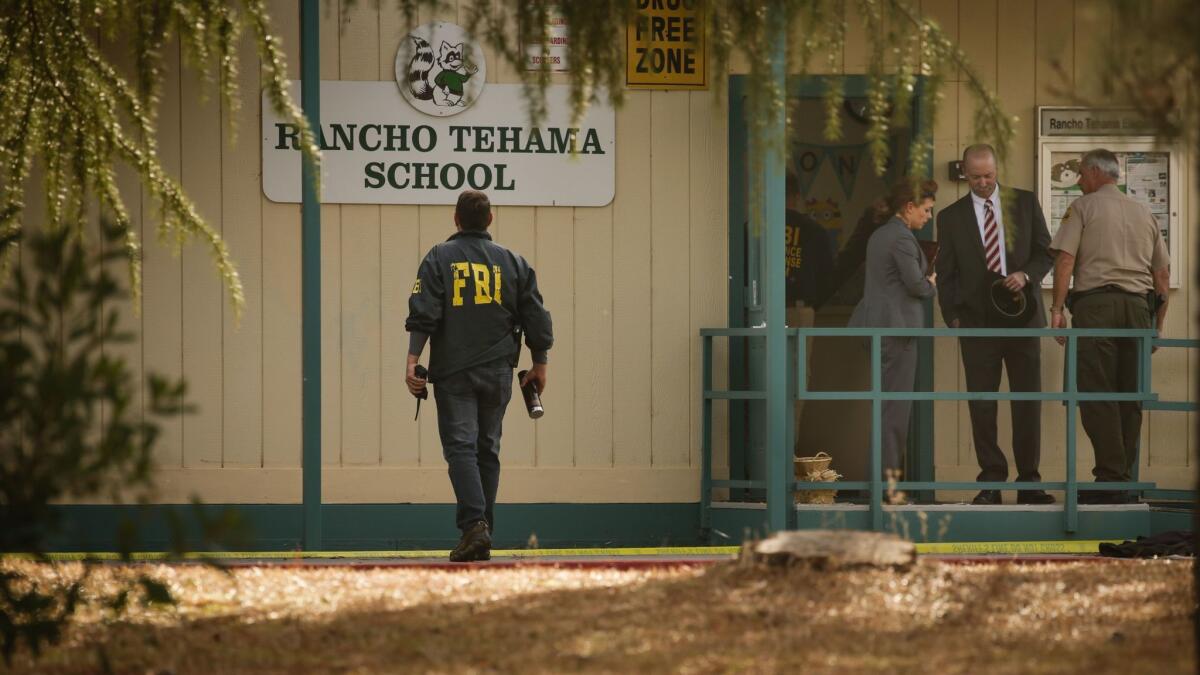
For 45 minutes, a gunman stormed through the Rancho Tehama Reserve in the northern Sacramento Valley, killing at least four people. Authorities were investigating seven crime scenes, one of them an elementary school where, after hearing gun shots, teachers and staff rushed children into classrooms and under desks, and locked the doors. When the gunman arrived, officials say, he shot at walls and windows, wounding two students, but could not enter the buildings and moved on to other targets. Police would later fatally shoot him.
Gas tax goes up. Now GOP vows to fight it at the ballot box

One of the most contentious issues in the Legislature this year was the adoption of gas tax and vehicle fee increases to raise more than $52 billion for improvements to the state’s roads, bridges and mass transit over 10 years. The action spawned two petition drives by Republicans to qualify 2018 ballot measures to repeal the measure. It also has fueled an effort to recall a Democratic state lawmaker who voted for the tax hike. The new law took effect Nov. 1, when the state gas tax increased by 12 cents per gallon to 41.7 cents. The excise tax on diesel fuel increased by 20 cents to 36 cents per gallon.
An effort to help ease housing crisis

After years of soaring rents and home prices, Gov. Jerry Brown and California lawmakers agreed in 2017 to pass the most significant package of housing legislation in recent memory. The laws taking effect Jan. 1 could add billions of dollars to subsidize new housing for low-income residents, make it easier for developers to build and, for the first time in 50 years, provide a substantive penalty to cities and counties where home construction fails to meet state planning goals. Nonetheless, estimates show that even after the new legislation, new construction in California will still lag by tens of thousands of homes needed just to keep pace with projected population growth.
Get the L.A. Times Politics newsletter
Deeply reported insights into legislation, politics and policy from Sacramento, Washington and beyond. In your inbox three times per week.
You may occasionally receive promotional content from the Los Angeles Times.



